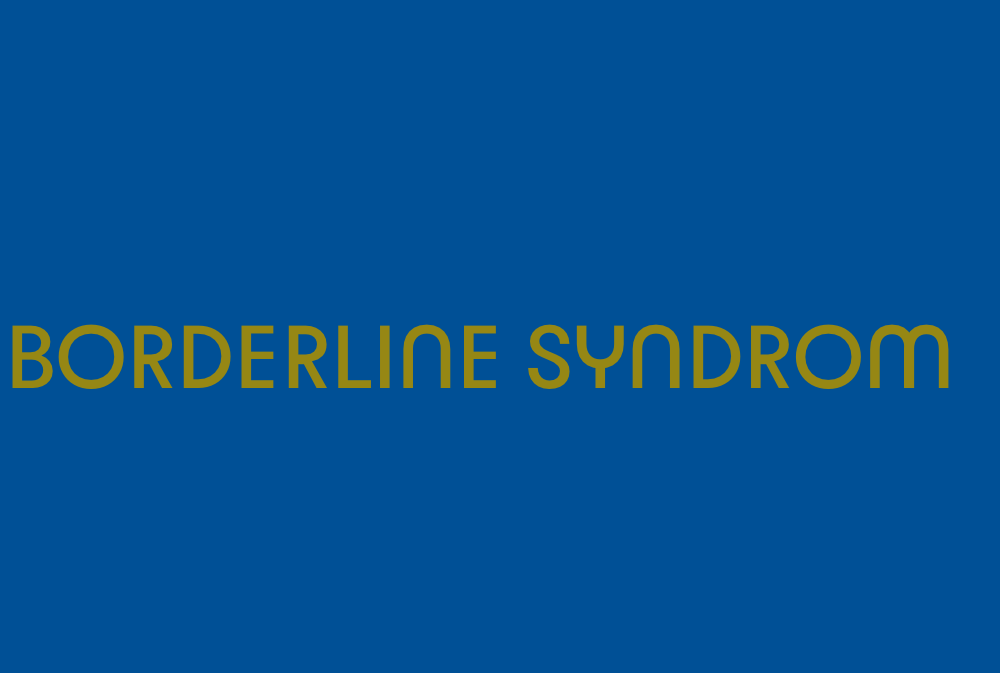Borderline Personality
Borderline Personality Disorder Job Instability
Struggling with job stability due to Borderline Personality Disorder? Stay tuned to discover strategies for creating a more supportive work environment.

Have you ever considered how Borderline Personality Disorder (BPD) impacts job stability?
The complexities of managing BPD symptoms in the workplace can present unique challenges not only for individuals with the disorder but also for their employers and colleagues.
Understanding the intricacies of BPD and its effects on job performance is essential in fostering a supportive and productive work environment.
By exploring strategies to address job instability associated with BPD, we can work towards creating more inclusive and accommodating workplaces for individuals facing these challenges.
Key Takeaways
- BPD symptoms affect job stability and performance.
- Coping strategies such as therapy and workplace support are crucial.
- Workplace accommodations and stress management aid in job stability.
- Access to EAP and mental health awareness improves workplace support.
Impact of BPD Symptoms on Employment
Individuals with Borderline Personality Disorder (BPD) often face significant challenges in maintaining stable employment due to the disruptive nature of their symptoms. Symptoms such as intense emotions, impulsivity, and unstable relationships can significantly impact their ability to thrive in a work environment. The intense emotional experiences that individuals with BPD face may lead to difficulties in regulating their feelings while at work, affecting their overall job performance and interactions with colleagues. Additionally, the all-or-nothing thinking commonly associated with BPD can create obstacles in navigating the nuances of workplace dynamics, making it challenging to adapt to changing circumstances.
Moreover, the unstable self-image characteristic of BPD can hinder career growth as individuals may struggle to align their professional identity with their fluctuating sense of self. This instability can also make it challenging for individuals with BPD to meet the expectations of their roles, further complicating their ability to maintain employment stability. In essence, the symptoms of BPD significantly impact various aspects of work life, from task completion to interpersonal relationships within the workplace.
Challenges in the Workplace

Facing the challenges presented by Borderline Personality Disorder (BPD) symptoms in the workplace requires a nuanced understanding of how these factors impact job stability and overall professional performance. Individuals grappling with BPD symptoms may find themselves navigating a complex landscape of job instability, impaired functioning, and difficulties in interpersonal relationships. The table below succinctly outlines the key challenges faced by individuals with BPD in the workplace:
| Challenges in the Workplace |
|---|
| Mood Swings |
| Impaired Work Performance |
| Low Decision Latitude |
| Job Insecurity |
| Conflicts with Co-workers |
These challenges can significantly hinder job stability and professional growth, leading to increased stress and decreased job satisfaction. Understanding the impact of BPD symptoms on work performance is crucial for both individuals with BPD and their employers to create a supportive and conducive work environment. By addressing these challenges head-on, individuals with BPD can work towards overcoming obstacles in the workplace and fostering a more positive and productive professional experience.
Coping Strategies for Job Instability
To effectively address job instability in Borderline Personality Disorder (BPD), implementing tailored coping strategies is essential. Seeking therapy to manage symptoms that impact work performance is crucial for individuals with BPD facing job instability.
Setting realistic work goals can help cope with the challenges that arise in the workplace due to BPD symptoms. Developing a support network comprising understanding colleagues and professionals provides valuable assistance in navigating job instability.
Utilizing stress management techniques such as mindfulness and deep breathing can aid in coping with the uncertainties associated with BPD-related job instability. Establishing a structured routine and seeking workplace accommodations are practical steps that individuals with BPD can take to manage job instability effectively.
Seeking Support in the Workplace

Navigating job instability due to Borderline Personality Disorder often requires seeking support in the workplace to effectively manage symptoms and enhance overall well-being. Individuals with BPD can benefit significantly from workplace support initiatives tailored to their needs. This can involve setting clear boundaries, providing consistent feedback, and allowing flexibility for therapy appointments to address symptoms like impulsivity and emotional instability.
Encouraging access to Employee Assistance Programs (EAP) can offer additional resources for managing symptoms at work. Creating an open and healthy work environment where individuals feel supported and understood is crucial for enhancing job stability and overall well-being.
Implementing sensitivity training and promoting mental health awareness among coworkers and employers can foster better understanding and support for individuals with Borderline Personality Disorder. By actively engaging in these supportive measures, workplaces can contribute to the well-being and success of employees with BPD.
Improving Work Performance
Improving work performance for individuals with Borderline Personality Disorder requires proactive strategies tailored to address the challenges posed by symptoms impacting their professional success. People with BPD often face difficulties in the workplace due to the effects of their symptoms on job performance.
The Netherlands mental health system recognizes the need for support, offering social benefits and disability benefits to assist individuals with a BPD diagnosis. To enhance job performance, creating a supportive workplace environment is crucial. Employers can provide understanding and accommodations for functional impairments caused by BPD symptoms.
Additionally, fostering stable and positive relationships with coworkers can help mitigate conflicts and improve overall job quality. By addressing the unique challenges faced by individuals with BPD in the workplace, it's possible to promote better job stability and performance while also supporting their mental health needs.
Frequently Asked Questions
Do People With BPD Struggle With Jobs?
Yes, people with BPD often struggle with jobs due to symptoms like impulsivity, emotional instability, and challenges in relationships. These difficulties can lead to frequent job changes, conflicts with coworkers, and inconsistent work performance.
Even minimal BPD symptoms can cause functional impairment and higher unemployment rates. Low decision latitude, job insecurity, and lack of co-worker support may contribute to job instability. BPD symptoms uniquely impact work performance, disrupting employment stability.
Why Is It Difficult to Work With Borderline Personality Disorder?
Working with individuals who've BPD can be challenging due to the complex nature of their symptoms. Understanding their emotional volatility, impulsivity, and difficulties in relationships is crucial.
It requires patience, empathy, and a deep understanding of how to navigate their fluctuating moods and intense reactions. By providing support, setting clear boundaries, and fostering a safe environment, we can help individuals with BPD thrive in various settings.
Why Is BPD Life Expectancy 27?
We understand the concern about the 27-year difference in life expectancy for individuals with BPD. This significant gap is primarily due to the elevated risk of self-destructive behaviors and suicide in this population.
Co-occurring mental health issues, substance abuse, and impulsive tendencies further contribute to the higher mortality rate.
It's crucial to emphasize early intervention, appropriate treatment, and continuous mental health support to address these challenges and improve outcomes for individuals with BPD.
What Is the Hardest Mental Illness to Live With?
Living with a mental illness presents unique challenges, but some may find Borderline Personality Disorder particularly difficult due to its symptoms of emotional instability and relationship struggles. Managing this condition requires tailored support and understanding.
It's essential to address mental health issues collectively and provide appropriate resources to help individuals navigate the complexities of their condition. Taking a proactive approach to mental health can lead to improved well-being and quality of life for all.
Conclusion
As we continue to navigate the challenges of job instability with Borderline Personality Disorder, it's crucial to remember that seeking support and implementing coping strategies can make a significant difference.
By addressing our symptoms and building a strong support system, we can improve our work performance and create a more stable career path.
Let's embrace these tools and continue on our journey towards success, one step at a time.
Paul is a storyteller at heart, sharing narratives illuminating the lived experiences of those with BPD. His work encompasses a range of topics, from personal journeys to the challenges and triumphs faced by individuals navigating life with BPD. Paul’s authentic and engaging writing style invites readers into the world of BPD, promoting awareness and empathy.
Borderline Personality
Borderline Personality Disorder Obsession
Suffering from Borderline Personality Disorder Obsession? Discover how it impacts daily life and find effective coping strategies to navigate through it.

Have you ever thought about how obsession in individuals with Borderline Personality Disorder affects their daily life?
The intense fixation and preoccupation with various aspects can be overwhelming, but understanding the symptoms, causes, and treatment options can provide valuable insights into managing this challenging aspect of BPD.
By exploring coping strategies and support systems, individuals can gain a better grasp of their obsessions and work towards improving their overall well-being.
Key Takeaways
- Obsessions stem from intense emotions and fear of abandonment.
- Healthy coping strategies and professional help are essential.
- Obsessive behaviors impact mental health, relationships, and daily life.
- Understanding symptoms and causes is crucial for effective treatment strategies.
Understanding Borderline Personality Disorder Obsession
In our exploration of Borderline Personality Disorder obsession, it becomes evident that understanding the roots of obsession is crucial for effective management and improved well-being. Obsession in BPD often stems from intense emotions, fear of abandonment, and challenges in regulating emotions and maintaining stable relationships. Individuals with BPD may experience obsessive thoughts or behaviors as a way to cope with their underlying emotional turmoil and insecurity. These obsessions can manifest in various aspects of their lives, affecting their mental health, relationships, and overall functioning.
To address obsessive tendencies in BPD, it's essential to develop healthy coping strategies and seek professional help. By recognizing the triggers and patterns of obsession, individuals can work towards managing their symptoms more effectively. Building a support network that encourages healthy boundaries and practicing mindfulness can also aid in reducing the impact of obsessions on daily life. With proper intervention and support, individuals with BPD can learn to navigate their obsessions in a way that promotes better mental well-being and enhances their quality of life.
Symptoms of BPD Obsession

Obsessively replaying conversations and interactions in our minds is a common symptom experienced by individuals with borderline personality disorder. This symptom can lead to a cycle of obsessive thoughts and behaviors that impact various aspects of daily life.
In addition to replaying conversations, individuals with BPD may exhibit the following symptoms:
- Seeking reassurance and validation: Constantly seeking validation and reassurance from others to alleviate the fear of abandonment and rejection.
- Fixation on details: A tendency to focus intensely on small details, which can result in heightened stress and anxiety.
- Obsessive apologies: Apologizing excessively and seeking validation through these apologies, often driven by a deep-seated need for reassurance.
These symptoms highlight the challenges faced by individuals with BPD in navigating their relationships and managing their emotions. Understanding these manifestations of obsession is crucial in providing appropriate support and treatment for those living with borderline personality disorder.
Causes of Obsession in BPD
Root causes of obsession in individuals with Borderline Personality Disorder (BPD) stem from emotional dysregulation, fear of abandonment, impulsivity, and identity issues. Obsessions serve as a coping mechanism for those with BPD, offering a sense of control amidst the emotional turmoil and uncertainty they often face. The intense emotional experiences and challenges with self-identity that characterize BPD can drive individuals to fixate on certain thoughts or behaviors, seeking stability and reassurance. The impulsivity inherent in BPD can further exacerbate obsessions, as individuals may act on their fixations without fully considering the consequences. Understanding these underlying factors is crucial in developing effective treatment strategies for managing obsessions in BPD.
| Key Factors | Examples |
|---|---|
| Emotional Dysregulation | Intense mood swings, difficulty controlling emotions |
| Fear of Abandonment | Constant fear of rejection or being left alone |
| Impulsivity | Acting on impulses without considering consequences |
Impact on Daily Life

The impact of obsession on the daily lives of individuals with Borderline Personality Disorder can be profound, affecting their relationships, productivity, and overall sense of well-being. Obsessive thoughts and behaviors associated with BPD can result in emotional distress, interpersonal conflicts, and a sense of overwhelming preoccupation.
- Strained relationships: Difficulty maintaining healthy boundaries may lead to obsessive behaviors that strain relationships and hinder social interactions.
- Decreased productivity: Obsession can consume significant mental energy, reducing focus and productivity in daily tasks and responsibilities.
- Negative self-image: Constant preoccupation with specific thoughts or fears can contribute to a negative self-perception, impacting self-esteem and overall well-being.
Individuals with BPD may face challenges in managing emotions, maintaining stable relationships, and engaging in regular activities due to the impact of obsession on their daily functioning. However, effective management strategies for obsession in BPD can help improve quality of life, reduce distress, and enhance overall well-being.
Treatment Options for BPD Obsession
Managing obsession in individuals with Borderline Personality Disorder (BPD) involves utilizing effective treatment options such as Dialectical Behavior Therapy (DBT) and Cognitive Behavioral Therapy (CBT) to address and modify obsessive thought patterns. DBT helps individuals regulate emotions and develop healthier coping mechanisms, while CBT focuses on restructuring negative thought patterns. In some cases, medication like antidepressants or mood stabilizers may be prescribed to alleviate symptoms of obsession. Group therapy sessions centered on managing obsessions offer a supportive environment and practical tools for individuals with BPD. It is crucial to work closely with a mental health professional to create a personalized treatment plan tailored to the individual's specific needs and challenges. By combining these approaches, individuals with BPD can effectively manage their obsessions and improve their quality of life.
| Treatment | Description | Benefits |
|---|---|---|
| Dialectical Behavior Therapy | Helps regulate emotions and develop healthy coping mechanisms | Emotional regulation, coping skills development |
| Cognitive Behavioral Therapy | Focuses on restructuring negative thought patterns | Challenging and changing obsessive thoughts |
| Medication | May include antidepressants or mood stabilizers to control symptoms of obsession in BPD | Symptom management |
| Group Therapy | Provides support and tools for managing obsessions in a group setting | Peer support, practical coping strategies |
Frequently Asked Questions
Do People With BPD Obsess Over Someone?
Yes, we do obsess over someone. It's a common experience for individuals with BPD. This fixation can stem from fear of abandonment, emotional turmoil, and struggles with identity.
Obsession often leads to seeking constant reassurance, replaying conversations, and feeling emotionally overwhelmed. These behaviors can strain relationships and exacerbate anxiety.
Understanding the roots of this obsession is crucial for managing intense emotions and fostering healthier connections.
What Are the Obsessions Compulsions of Bpd?
We obsess over various things, from relationships to work, seeking validation and reassurance. It's common to fixate on details, replaying conversations in search of conflicts or seeking constant reassurance about others' moods. This behavior often stems from a deep fear of abandonment and underlying guilt or shame.
Our emotions can escalate quickly, leading to black-and-white thinking. The desire for love clashes with the fear of being left alone, creating a push-pull dynamic in relationships.
What Does a BPD Episode Look Like?
In a BPD episode, we often experience intense emotional turmoil, leading to heightened sensitivity and impulsivity. Our thoughts may race, and our behaviors can be erratic.
We may struggle with maintaining stable relationships and regulating our emotions effectively. This can result in feelings of emptiness and fear of abandonment. It's a challenging time where we may seek reassurance and struggle to find a sense of stability.
Why Are Borderlines so Seductive?
We can understand the seductive behavior of individuals with BPD as a manifestation of their intense emotional needs for validation and connection.
This behavior could stem from a deep-seated fear of abandonment, leading to a coping mechanism of using seductiveness to avoid rejection.
The push-pull dynamics in relationships that result from this seductive behavior can create chaos and intensity, reflecting the inner turmoil and insecurity experienced by those with BPD.
Conclusion
In conclusion, navigating the complexities of Borderline Personality Disorder obsession can be challenging, but with the right support and coping mechanisms, individuals can learn to manage their intense fixations effectively.
Like a river flowing steadily, seeking help, practicing mindfulness, and developing healthy habits can guide us towards a calmer and more balanced state of mind.
Let's embrace the journey of self-discovery and growth, knowing that we have the power to overcome our obsessions and thrive.
Paul is a storyteller at heart, sharing narratives illuminating the lived experiences of those with BPD. His work encompasses a range of topics, from personal journeys to the challenges and triumphs faced by individuals navigating life with BPD. Paul’s authentic and engaging writing style invites readers into the world of BPD, promoting awareness and empathy.
Borderline Personality
Borderline Personality Questionnaire 15 Questions
Unravel the enigmatic depths of your personality with the Borderline Personality Questionnaire 15 Questions, revealing hidden facets waiting to be discovered.

Let’s explore the Borderline Personality Questionnaire 15 Questions, a meticulously crafted tool for understanding personality traits. By delving into these questions, we may discover hidden aspects of ourselves.
But what lies beyond the surface of these queries? What insights could they unveil about our inner workings and emotional landscapes? Join us as we navigate this questionnaire and uncover the hidden depths it may reveal about ourselves.
Key Takeaways
- BPD characterized by mood instability, turbulent relationships, and intense emotional fluctuations.
- Fear of abandonment, self-harming behaviors, and suicidal tendencies are common in BPD.
- Emotional dysregulation and identity confusion are significant symptoms of BPD.
- Professional intervention is vital for managing BPD symptoms effectively.
Understanding Borderline Personality Disorder
Understanding Borderline Personality Disorder involves recognizing the significant impact of mood instability, turbulent relationships, and intense emotional fluctuations on individuals diagnosed with this condition. People with Borderline Personality Disorder often experience extreme emotional highs and lows, which can be overwhelming and disruptive to their daily lives. These intense emotions can manifest as feelings of anger, anxiety, or sadness that may seem disproportionate to the situation at hand. Additionally, individuals with BPD commonly struggle with a deep fear of abandonment, leading to difficulties in forming and maintaining stable relationships.
Moreover, the symptoms associated with Borderline Personality Disorder go beyond typical mood swings and can include self-harming behaviors and suicidal tendencies. These behaviors are often coping mechanisms for managing the intense emotional pain and feelings of emptiness that individuals with BPD frequently encounter. Understanding the underlying reasons for these intense emotions is crucial in providing effective support and treatment for those diagnosed with Borderline Personality Disorder.
Identifying BPD Symptoms

When identifying symptoms of borderline personality disorder (BPD), we focus on recognizing specific traits and behavioral patterns. These include signs of emotional instability, self-destructive tendencies, and difficulties in maintaining stable relationships.
Symptoms to Recognize
BPD symptoms can manifest as a fear of abandonment or rejection, intense mood swings, and identity confusion. These symptoms can be challenging to navigate and may require professional intervention for effective management.
To recognize symptoms of Borderline Personality Disorder (BPD), individuals should look out for:
- Fear of Abandonment: A persistent fear of being abandoned by loved ones, leading to desperate attempts to avoid real or imagined separation.
- Intense Mood Swings: Rapid and extreme shifts in emotions, causing difficulties in regulating feelings and responses to situations.
- Identity Confusion: A lack of a stable self-image, resulting in uncertainty about one's values, goals, and identity.
Recognizing these symptoms is crucial for seeking appropriate support and interventions.
Behavioral Patterns in BPD
To further comprehend Borderline Personality Disorder (BPD), it is essential to explore the behavioral patterns exhibited by individuals with this condition, particularly focusing on identifying key symptoms indicative of BPD. Individuals with BPD may engage in self-destructive behaviors such as self-harm and substance abuse, experience chaotic and toxic relationships, exhibit impulsivity leading to actions without considering consequences, undergo rapid changes in feelings of love and attachment, and struggle with intense mood swings and emotional regulation difficulties. Understanding these behavioral patterns is crucial for early identification and intervention in individuals with BPD.
| Behavioral Patterns in BPD | Examples |
|---|---|
| Self-destructive behaviors | Self-harm, substance abuse |
| Chaotic relationships | Intense emotions, conflicts |
| Impulsivity | Actions without thought |
Emotional Instability Signs
Upon observing individuals with Borderline Personality Disorder, one can readily identify signs of emotional instability through their pronounced mood swings and impulsive behaviors. These indicators serve as crucial markers in recognizing potential BPD symptoms:
- Intense Mood Swings: BPD often manifests in rapid and extreme shifts in mood, leading individuals from elation to despair in a short span of time.
- Impulsive Behaviors: Those with BPD may engage in impulsive actions like reckless spending, substance abuse, or risky sexual activities without considering the consequences.
- Fear of Abandonment: A prevalent symptom in BPD, the fear of abandonment can trigger desperate attempts to avert real or perceived rejection, further exacerbating emotional instability.
Self-Assessment for BPD

When considering self-assessment for BPD, it's crucial to pay attention to signs such as:
- Intense fear of abandonment
- Impulsive actions
- Unstable moods
- Distorted self-image
These indicators can offer valuable insights into potential BPD symptoms and guide individuals in seeking appropriate support and professional evaluation. By recognizing these signs and utilizing self-assessment tools, individuals can take proactive steps towards understanding their experiences and addressing concerns related to borderline personality disorder.
Signs of BPD
Assessing signs of borderline personality disorder through self-assessment tools like the BPD questionnaire can aid in recognizing key symptoms indicative of the disorder. When evaluating signs of BPD, individuals may notice:
- Fear of Abandonment: An intense fear of being left or rejected by others, leading to frantic efforts to avoid real or imagined abandonment.
- Impulsivity: Engaging in risky behaviors such as substance abuse, reckless driving, binge eating, or unsafe sex without considering the consequences.
- Mood Swings: Experiencing intense and rapid shifts in mood, going from feeling happy to sad or angry within a short period.
Identifying these signs can prompt individuals to seek professional guidance for a comprehensive evaluation and appropriate support.
Seeking Support
Recognizing signs of borderline personality disorder through self-assessment tools like the BPD questionnaire can serve as a crucial first step in seeking appropriate support and guidance. Seeking support after completing the questionnaire is essential for a more accurate diagnosis and tailored treatment. Below is a table summarizing key points on seeking support for borderline personality disorder:
| Key Points | Details | Benefits |
|---|---|---|
| Consult a mental health professional | Seek guidance from a therapist or psychiatrist specialized in BPD | Accurate diagnosis and personalized treatment |
| Join a support group | Connect with others facing similar challenges | Emotional validation and shared experiences |
| Educate yourself on BPD | Learn about the disorder and available treatment options | Empowerment and informed decision-making |
Exploring Emotional Patterns

Exploring emotional patterns in individuals with borderline personality disorder reveals valuable insights into their emotional regulation challenges. Understanding these patterns is crucial for managing the symptoms associated with borderline personality disorder. Here are three key aspects to consider:
- Intense Mood Swings: Individuals with borderline personality disorder often experience intense and rapid shifts in mood. These mood swings can be triggered by seemingly insignificant events and can be challenging to regulate without proper intervention.
- Difficulty Regulating Emotions: Emotional dysregulation is a hallmark feature of borderline personality disorder. Individuals may struggle to control their emotions, leading to impulsive behaviors and unstable relationships. Recognizing these difficulties is essential for developing effective coping mechanisms.
- Impact on Daily Functioning: Emotional patterns can significantly impact various aspects of an individual's life, including relationships, self-image, and daily functioning. By identifying these patterns and working on emotional regulation skills, individuals can improve their overall well-being and quality of life.
Behavioral Questionnaire Overview

Borderline personality traits are assessed through a 15-question self-report scale known as the borderline personality questionnaire, developed by Dr. Amir R. Poreh and colleagues for screening purposes. This diagnostic tool is designed to evaluate various behavioral and emotional aspects commonly associated with borderline personality disorder.
The questionnaire consists of true/false statements that individuals respond to based on their usual self over the past two years. It's crucial to note that scores obtained from this questionnaire should be interpreted by qualified health professionals.
While the borderline personality questionnaire serves as a valuable screening tool, it isn't meant for making diagnostic decisions on its own. Therefore, it's essential to consider the results within the context of a comprehensive evaluation by healthcare providers with expertise in diagnosing and treating borderline personality disorder.
Emotional Triggers Examination

The examination of emotional triggers within the borderline personality questionnaire offers insight into factors that elicit intense emotional responses. This evaluation helps individuals and mental health professionals pinpoint specific situations, events, or interactions that lead to emotional distress. Understanding one's emotional triggers is essential for developing effective coping strategies and enhancing emotional regulation techniques.
Here are three key points to consider when examining emotional triggers:
- Identification: The questionnaire assists in identifying specific triggers that provoke heightened emotional reactions, providing clarity on what leads to emotional distress.
- Pattern Recognition: By analyzing emotional triggers, patterns of behavior and thought can be uncovered, shedding light on recurring themes that contribute to emotional instability.
- Management Strategies: Recognizing and addressing emotional triggers is crucial for individuals with borderline personality disorder to manage symptoms effectively, fostering better emotional well-being and stability.
Analyzing Relationship Dynamics

When examining relationship dynamics in borderline personality disorder, it's crucial to consider the aspects of trust, communication patterns, and emotional boundaries.
Trust plays a significant role in shaping interactions, especially given the challenges individuals with BPD face in trusting others.
Communication patterns can either foster healthy connections or contribute to misunderstandings within relationships, impacting overall dynamics.
Establishing and maintaining emotional boundaries is essential for individuals with BPD to navigate relationships effectively and protect their well-being.
Trust in Relationships
Navigating trust in relationships proves to be a complex and pivotal aspect when analyzing the dynamics of individuals with borderline personality disorder. Trust plays a significant role in shaping the quality of relationships for individuals with BPD.
Here are three key points to consider:
- Trust Struggles: Individuals with BPD often face challenges in trusting others due to past experiences of abandonment or rejection, which can impact their ability to form and maintain healthy relationships.
- Impact on Stability: Difficulties in building trust can lead to unstable and intense relationship dynamics, affecting the overall stability of connections for individuals with BPD.
- Therapeutic Interventions: Addressing trust issues through therapies like Dialectical Behavior Therapy (DBT) can assist individuals with BPD in improving relationship dynamics and fostering healthier attachments.
Communication Patterns
Trust struggles in relationships for individuals with borderline personality disorder often manifest through challenging communication patterns marked by intense emotional reactions and misunderstandings. Fear of abandonment can lead to heightened sensitivity to perceived threats in communication, triggering defensive responses. This fear can result in individuals with BPD interpreting neutral remarks as signs of rejection, exacerbating emotional dysregulation. The table below illustrates common communication patterns in BPD relationships:
| Communication Patterns | Description |
|---|---|
| Intense Emotional Reactions | Overwhelming emotional responses to stimuli |
| Fear of Abandonment | Persistent worry about being left or rejected |
| Misunderstandings | Difficulty in accurately interpreting messages |
Addressing these patterns through therapy can enhance emotional regulation and promote healthier relationship dynamics.
Emotional Boundaries
Establishing and maintaining healthy emotional boundaries is essential in analyzing relationship dynamics to promote individual autonomy and emotional well-being. When it comes to understanding emotional boundaries in the context of Borderline Personality Disorder, it's crucial to consider the following key points:
- Self-awareness: Recognizing one's emotional needs and limits is fundamental in setting healthy boundaries.
- Communication skills: Effectively expressing boundaries and needs to others is essential for maintaining emotional well-being.
- Assertiveness: Being assertive in upholding boundaries helps in preventing emotional enmeshment and fostering individual identity within relationships.
Impulsive Behavior Assessment

Assessment of impulsive behavior serves as a vital tool in identifying and evaluating tendencies towards acting without forethought or consideration. In the context of Borderline Personality Disorder (BPD), impulsive behavior is a hallmark feature that can significantly impact an individual's life.
Evaluating the frequency and severity of impulsive actions across different situations provides valuable insights into the individual's impulsivity levels. This assessment not only helps in understanding the nature of impulsive behaviors but also plays a crucial role in assessing the potential risks for self-harm or harm to others associated with impulsivity in individuals with BPD.
Dealing With Abandonment Fear

Exploring the impact of abandonment fear on individuals with Borderline Personality Disorder illuminates the profound emotional challenges they face in navigating relationships and daily interactions. Abandonment fear in BPD can trigger intense emotional reactions and behaviors, leading individuals to go to great lengths to avoid real or perceived abandonment. These fears often originate from past experiences of rejection or neglect, amplifying the distress individuals feel in relationships. Addressing abandonment fear is essential for individuals with BPD to improve their relationships and overall mental well-being.
To effectively deal with abandonment fear, individuals with BPD can benefit from therapy modalities such as Dialectical Behavior Therapy (DBT). Through DBT, individuals learn coping mechanisms and strategies to manage their intense emotional responses to abandonment triggers, fostering healthier interpersonal connections and emotional regulation. Seeking professional help and support can empower individuals with BPD to navigate abandonment fear and develop more stable relationships.
- Abandonment fear in BPD triggers intense emotional reactions and behaviors.
- Individuals with BPD may go to great lengths to avoid abandonment due to past experiences.
- Therapy, such as DBT, is crucial in helping individuals with BPD manage abandonment fears.
Coping With Anger Episodes

Coping with anger episodes in individuals with Borderline Personality Disorder involves implementing mindfulness techniques and developing healthy coping mechanisms to effectively manage intense emotions. Identifying triggers and practicing mindfulness can aid in navigating anger episodes. Healthy coping strategies such as deep breathing, grounding exercises, and relaxation techniques play a crucial role in regulating emotions during these episodes. Additionally, engaging in therapy, particularly Dialectical Behavior Therapy (DBT), equips individuals with tools to communicate effectively, regulate emotions, and cope with anger constructively. Understanding the underlying causes of anger in BPD, such as fear of abandonment or rejection, is essential for addressing these issues and reducing the frequency of anger episodes. Building a strong support system and seeking professional help are vital steps in managing anger episodes and promoting overall emotional well-being.
| Mindfulness Techniques | Healthy Coping Mechanisms | Therapy Support |
|---|---|---|
| Deep Breathing | Grounding Exercises | DBT |
| Meditation | Relaxation Techniques | Communication |
Self-Image Evaluation

When examining the POINTS related to self-image evaluation in Borderline Personality Disorder (BPD), we consider the significant impact it has on individuals' perceptions of themselves.
Understanding how self-image influences perception is crucial in managing the distorted self-views often experienced by those with BPD.
Developing effective coping mechanisms to address these distortions is essential for individuals navigating the challenges of BPD.
Impact of Self-Image
Understanding the impact of self-image evaluation is crucial in comprehending the symptoms of borderline personality disorder. Individuals with BPD often struggle with distorted self-images, leading to identity confusion and a lack of self-worth. This self-image evaluation significantly influences how they perceive themselves and others, contributing to the challenges they face in relationships and daily functioning. Addressing these issues is essential in BPD treatment to help individuals develop a more stable and positive sense of self. By recognizing the impact of self-image evaluation, mental health professionals can tailor interventions that focus on improving self-esteem and self-perception, ultimately enhancing the individual's overall well-being and quality of life.
- Distorted self-image can lead to identity confusion.
- Self-worth issues are common among individuals with BPD.
- Addressing self-image problems is crucial for effective BPD treatment.
Influences on Perception
In borderline personality disorder, self-image evaluation is profoundly influenced by intense and fluctuating emotions, often resulting in distorted perceptions of oneself. Individuals with BPD may struggle with maintaining a stable and consistent sense of self, leading to an unstable self-image.
The intense mood swings characteristic of BPD contribute significantly to the challenges in maintaining a clear self-perception. This instability in self-image can manifest as feelings of emptiness and identity confusion, further complicating how individuals view themselves and their position in the world.
Understanding these influences on perception is crucial for assessing and planning effective treatment strategies for individuals with BPD. Addressing the impact of unstable self-image and intense mood fluctuations is essential in providing comprehensive care and support for those with borderline personality disorder.
Coping With Distortion
Distorted self-image evaluation can significantly impact individuals with borderline personality disorder, necessitating effective coping strategies to challenge and replace negative beliefs. Coping with distortion is crucial in managing the symptoms associated with this disorder.
Here are three key techniques to help individuals cope with distortion in self-image evaluation:
- Cognitive Restructuring: This technique involves identifying and challenging negative thought patterns, replacing them with more balanced and realistic beliefs.
- Self-Affirmations: Engaging in positive self-talk and affirming one's worth and abilities can help counteract distorted self-perceptions.
- Therapy and Counseling: Seeking professional support and guidance can provide strategies and tools to address and cope with self-image distortion effectively.
Paranoia and Suspicious Thoughts

Paranoia and suspicious thoughts frequently accompany borderline personality disorder (BPD), impacting individuals' perceptions of trust and safety in their relationships. People with BPD may harbor intense fears of betrayal or harm from others, leading to a heightened sense of vigilance and mistrust. These suspicious thoughts can distort reality, making individuals feel threatened or persecuted even in non-threatening situations. Addressing paranoia in BPD is crucial for improving overall trust and emotional stability. Let's delve deeper into how paranoia and suspicious thoughts manifest in individuals with BPD:
| Types of Suspicious Thoughts | Impact on Relationships | Strategies for Coping |
|---|---|---|
| Irrational Beliefs about Others' Intentions | Creates Distance and Isolation | Cognitive Behavioral Therapy |
| Fear of Betrayal or Rejection | Difficulty Building and Maintaining Relationships | Mindfulness and Grounding Techniques |
| Feeling Persecuted or Targeted | Trust Issues and Conflict | Dialectical Behavior Therapy (DBT) Skills Training |
Understanding and addressing these paranoid thoughts is fundamental in supporting individuals with BPD towards healthier relationships and improved well-being.
Addressing Abandonment Efforts

Addressing abandonment efforts plays a pivotal role in effectively managing symptoms associated with borderline personality disorder. Individuals with BPD often struggle with intense fear of abandonment, which can manifest in relationship challenges. To address these issues, therapy approaches like Dialectical Behavior Therapy (DBT) can be beneficial in helping individuals develop coping strategies for abandonment fears.
- Building Trust: Establishing trust in oneself and others is essential in overcoming abandonment fears and fostering healthier relationships.
- Effective Communication: Learning how to communicate needs, boundaries, and emotions can help individuals with BPD navigate relationship challenges stemming from abandonment issues.
- Emotional Regulation: Developing skills to manage intense emotions is crucial for individuals with BPD to respond constructively to abandonment triggers and maintain stable relationships.
Understanding the impact of abandonment fears on behavior and relationships is fundamental for providing effective treatment and support to individuals with borderline personality disorder.
Dissociative Feelings Inquiry

Exploring the phenomenon of dissociative feelings in Borderline Personality Disorder reveals a complex interplay between emotional experiences and cognitive processes. Dissociative feelings in BPD encompass a range of experiences, such as a sense of detachment from oneself or reality. These feelings often arise during periods of heightened emotional intensity or stress, leading individuals to feel disconnected from their thoughts, emotions, or surroundings.
The manifestation of dissociation can vary in intensity and duration, significantly impacting daily functioning and emotional stability for those with BPD. It's crucial for individuals experiencing frequent or distressing dissociative feelings to seek professional help to address these challenges effectively. By understanding the nature of dissociative feelings within the context of BPD, individuals can work towards developing coping strategies and interventions that promote emotional regulation and overall well-being.
Test Result Interpretation

Understanding the borderline personality questionnaire test results requires careful analysis by a qualified mental health professional to assess the presence of BPD traits or symptoms. When interpreting the results of the Borderline Personality Disorder Test, licensed mental health professionals consider several key factors:
- Patterns of Behavior: The questionnaire helps identify consistent patterns of behavior and emotions that are indicative of borderline personality disorder.
- Severity of Symptoms: Professionals evaluate the severity of symptoms indicated by the test results to determine the level of intervention and support needed.
- Treatment Recommendations: Based on the interpretation of the questionnaire results, licensed mental health professionals can provide appropriate guidance and recommendations for seeking support and treatment for BPD.
Accurate interpretation of the Borderline Personality Disorder Test results is crucial for individuals to receive the necessary help and support in addressing potential symptoms effectively.
Frequently Asked Questions
What Questions Do They Ask in a BPD Assessment?
In BPD assessments, questions typically probe fear of abandonment, anger management, impulsivity, identity confusion, mood swings, self-destructive behaviors, and unstable relationships.
Trust issues, sense of belonging, and emotional regulation are also common topics.
These inquiries aim to assess various aspects of personality and behavior associated with Borderline Personality Disorder.
The questions seek to gather detailed information to aid in the evaluation and diagnosis of BPD.
What Questionnaires Are Used for Bpd?
We explore various questionnaires commonly utilized in Borderline Personality Disorder (BPD) assessments. These tools, such as the Borderline Personality Questionnaire (BPQ) and the McLean Screening Instrument for BPD (MSI-BPD), help in evaluating symptoms like fear of abandonment and impulsivity.
They offer a structured approach to identifying BPD traits, aiding both individuals and professionals in assessing potential symptoms before seeking clinical diagnosis and treatment.
How to Score Borderline Personality Questionnaire?
To score the Borderline Personality Questionnaire, we assign points based on endorsed symptoms. Each question corresponds to specific BPD criteria, with scoring reflecting symptom severity. Accurate scoring is crucial for gauging BPD likelihood and severity.
What Is the Cut off Score for Bpq?
In general, the cutoff score for the Borderline Personality Questionnaire (BPQ) is typically set around 75 or higher. This threshold indicates a higher likelihood of borderline personality traits.
It serves as a useful indicator to identify individuals who may require further assessment or support.
It's crucial to interpret the BPQ score in conjunction with a comprehensive evaluation conducted by a mental health professional to ensure accurate understanding and appropriate interventions.
Conclusion
In conclusion, the Borderline Personality Questionnaire with its 15 questions serves as a valuable tool for assessing borderline personality traits.
While it provides insight into emotional and behavioral patterns, it's essential to remember that interpretation should be done by qualified professionals.
Utilizing this questionnaire can aid in self-awareness and understanding, but further evaluation and guidance are necessary for accurate diagnosis and treatment of borderline personality disorder.
Paul is a storyteller at heart, sharing narratives illuminating the lived experiences of those with BPD. His work encompasses a range of topics, from personal journeys to the challenges and triumphs faced by individuals navigating life with BPD. Paul’s authentic and engaging writing style invites readers into the world of BPD, promoting awareness and empathy.
Borderline Personality
Which Attachment Style Is Associated With Borderline Personality Disorder
Fascinating insights into how attachment styles relate to Borderline Personality Disorder shed light on crucial factors influencing relationships and emotional regulation.

Research has discovered a strong link between Borderline Personality Disorder (BPD) and attachment patterns, revealing that many individuals with BPD display behaviors linked to insecure attachment.
These attachment styles are known to impact the way individuals form and maintain relationships, influencing their emotional regulation and interpersonal dynamics.
Understanding the specific attachment styles commonly linked to BPD can provide valuable insights into the underlying mechanisms of this complex disorder. By unraveling these connections, we gain a deeper understanding of how attachment experiences shape the manifestation of BPD symptoms and inform potential therapeutic interventions.
Key Takeaways
- Insecure attachment prevalent in BPD, impacting relationships and emotional regulation.
- Anxious-Preoccupied attachment common in BPD, fear of rejection and clinginess.
- Fearful-Avoidant attachment in BPD: blend of anxious and avoidant behaviors.
- Dismissive-Avoidant attachment in BPD leads to struggles with intimacy and emotions.
Common Insecure Attachment Styles in BPD
In individuals diagnosed with Borderline Personality Disorder (BPD), common insecure attachment styles manifest as intense fear of abandonment, a blend of anxious and avoidant behaviors, and emotional independence coupled with trust issues. These attachment patterns, as elucidated by John Bowlby, shape the way individuals with BPD perceive and navigate relationships.
The anxious-preoccupied attachment style in BPD is characterized by a persistent fear of rejection and abandonment, leading to a constant need for reassurance and validation. Conversely, the fearful-avoidant attachment style in BPD results in a paradoxical mix of desiring closeness while simultaneously pushing others away due to a deep-rooted fear of intimacy. Additionally, the dismissive-avoidant attachment style in BPD fosters emotional independence and self-reliance, often causing individuals to struggle with trusting others and forming secure connections.
Understanding these insecure attachment styles is paramount in comprehending the complexities of BPD and tailoring effective therapeutic interventions to address the underlying attachment issues.
Anxious-Preoccupied Attachment in BPD

Commonly associated with Borderline Personality Disorder (BPD), Anxious-Preoccupied Attachment manifests as an intense fear of abandonment and rejection in individuals diagnosed with this condition. This attachment style in BPD leads to heightened sensitivity to relationship dynamics and emotional fluctuations. Individuals with BPD and Anxious-Preoccupied Attachment may exhibit clinginess, constantly seeking reassurance, and an overwhelming fear of being alone. Understanding and addressing Anxious-Preoccupied Attachment is crucial in the treatment and management of BPD symptoms.
- Anxious-Preoccupied Attachment is prevalent among individuals diagnosed with Borderline Personality Disorder.
- Fear of abandonment and rejection is a central feature of Anxious-Preoccupied Attachment in BPD.
- This attachment style amplifies sensitivity to relationship dynamics and emotional changes.
- Clinginess, seeking constant reassurance, and an intense fear of solitude are common expressions of Anxious-Preoccupied Attachment in BPD.
Fearful-Avoidant Attachment in BPD
Fearful-Avoidant Attachment, a prevalent attachment style in individuals diagnosed with Borderline Personality Disorder (BPD), exhibits a combination of anxious and avoidant behaviors within relationships. Those with BPD and Fearful-Avoidant Attachment often experience intense fear of abandonment and rejection, leading to trust issues and emotional independence.
This attachment style poses challenges in forming stable relationships due to the conflicting desires for closeness and the fear of being hurt. Therapeutic interventions for individuals with BPD must address these specific trust and abandonment issues associated with Fearful-Avoidant Attachment to promote healing and growth.
Understanding the dynamics of Fearful-Avoidant Attachment in BPD is essential for clinicians to tailor treatment strategies effectively. By recognizing the anxious and avoidant tendencies within this attachment style, mental health professionals can provide targeted support to help individuals with BPD develop healthier relationship patterns and work towards emotional stability.
Dismissive-Avoidant Attachment in BPD

Despite its prevalence in individuals diagnosed with Borderline Personality Disorder (BPD), Dismissive-Avoidant Attachment is characterized by emotional independence and trust issues. This attachment style can significantly impact how individuals with BPD navigate their relationships and emotions.
Here are four key characteristics of Dismissive-Avoidant Attachment in BPD:
- Struggles with Close Relationships: Individuals with BPD and a Dismissive-Avoidant Attachment style may find it challenging to form and maintain close relationships due to their reluctance to rely on others.
- Difficulty Expressing Emotions: Those with this attachment style in BPD may face difficulties in expressing their emotions openly, leading to internalized emotional struggles.
- Avoidance of Intimacy: Dismissive-Avoidant Attachment in BPD can result in a strong tendency to avoid intimacy and vulnerability in relationships.
- Suppressed Emotional Needs: This attachment style may lead individuals to suppress their emotional needs, impacting their overall emotional well-being.
Understanding these characteristics is crucial for developing tailored therapeutic interventions that address the specific challenges faced by individuals with BPD and Dismissive-Avoidant Attachment.
Secure and Mixed Attachment in BPD
In examining the attachment styles present in Borderline Personality Disorder (BPD), the manifestation of secure and mixed attachment behaviors among individuals with BPD reveals a complex interplay influencing relationship dynamics and emotional regulation. While secure attachment style is less commonly associated with BPD, some individuals with BPD may exhibit secure attachment behaviors alongside other attachment patterns. Mixed attachment patterns, blending features of different attachment styles such as anxious-preoccupied, dismissive-avoidant, and fearful-avoidant, are prevalent in individuals with BPD, leading to intricate relationship dynamics and challenges in emotional regulation. Understanding the combination of secure and mixed attachment styles in BPD is crucial for tailoring effective therapeutic interventions and enhancing relationship management strategies.
| Attachment Styles | Associated Behaviors in BPD |
|---|---|
| Secure | Less common, but present in some individuals with BPD |
| Mixed | Common blend of various attachment styles in individuals with BPD |
Frequently Asked Questions
What Are the 4 Types of Borderline Personality Disorder?
There are four types of Borderline Personality Disorder (BPD): Anxious-Preoccupied, Fearful-Avoidant, Dismissive-Avoidant, and Secure Attachment styles.
Anxious-Preoccupied attachment involves intense fears of abandonment.
Fearful-Avoidant attachment shows a mix of anxious and avoidant behaviors.
Dismissive-Avoidant attachment leads to emotional independence and trust issues.
Secure Attachment style in BPD reflects healthier relationship behaviors.
Each style influences how individuals with BPD perceive and interact within relationships.
What Is a Borderline Personality Disorder Favorite Person?
When considering the concept of a Borderline Personality Disorder (BPD) favorite person, it's crucial to acknowledge the intense emotional attachment and dependency that can develop. This relationship often involves feelings of admiration, idealization, and reliance.
Individuals with BPD may exhibit extreme emotional fluctuations in their interactions with their favorite person, impacting their self-worth and emotional stability. Understanding and navigating these dynamics is vital in therapy and support for those with BPD.
What Is Borderline Personality Disorder Associated With?
Borderline Personality Disorder is associated with insecure attachment styles, such as preoccupied, fearful, and unresolved attachments. Individuals with BPD often display anxious-preoccupied attachment, marked by a strong fear of abandonment.
Fearful-avoidant attachment, blending anxious and avoidant behaviors, is linked to BPD. Dismissive-avoidant attachment, leading to emotional independence and trust issues, is also prevalent.
Additionally, secure attachment, mixed patterns, and reactive attachment may be present in individuals with BPD.
Do People With BPD Get Attached Easily?
Yes, individuals with BPD often form attachments quickly and intensely. This tendency is linked to their anxious-preoccupied attachment style, characterized by a fear of abandonment.
This intense attachment can lead to difficulties in relationships, as individuals with BPD may struggle to maintain boundaries and regulate emotions. Understanding this attachment style provides valuable insights into how people with BPD navigate their relationships and cope with their fears of rejection.
Conclusion
In conclusion, individuals with Borderline Personality Disorder often exhibit insecure attachment styles, such as anxious-preoccupied, fearful-avoidant, and dismissive-avoidant. These attachment patterns contribute to the interpersonal difficulties and emotional instability characteristic of BPD.
For example, a hypothetical case study could involve a person with BPD displaying anxious-preoccupied attachment, seeking constant reassurance and validation from others but struggling with intense fears of abandonment. Understanding these attachment styles is crucial in providing effective treatment and support for individuals with BPD.
Paul is a storyteller at heart, sharing narratives illuminating the lived experiences of those with BPD. His work encompasses a range of topics, from personal journeys to the challenges and triumphs faced by individuals navigating life with BPD. Paul’s authentic and engaging writing style invites readers into the world of BPD, promoting awareness and empathy.
-

 Divorcing a Partner with Borderline6 days ago
Divorcing a Partner with Borderline6 days agoUnderstanding Borderline Personality in Divorce
-

 Borderline Personality1 week ago
Borderline Personality1 week agoStories of Hope: Triumph in BPD Relationships
-

 Managing or Understanding BPD3 days ago
Managing or Understanding BPD3 days agoHow Does a Borderline React to No Contact
-

 Managing or Understanding BPD2 days ago
Managing or Understanding BPD2 days agoHow to Communicate With Someone Who Has Borderline Personality Disorder
-

 Divorcing a Partner with Borderline4 days ago
Divorcing a Partner with Borderline4 days agoHow to Navigate Divorce with a Borderline Personality Disordered Spouse
-

 Borderline Narcissist2 days ago
Borderline Narcissist2 days agoNarcissist Vs Borderline: Key Differences in Personality Disorders
-

 Borderline Disorder3 months ago
Borderline Disorder3 months agoHealing After a Bpd Relationship: Recovering Your Self
-

 Borderline Disorder3 months ago
Borderline Disorder3 months agoWhat Characters in TV Show Have Bpd?

















